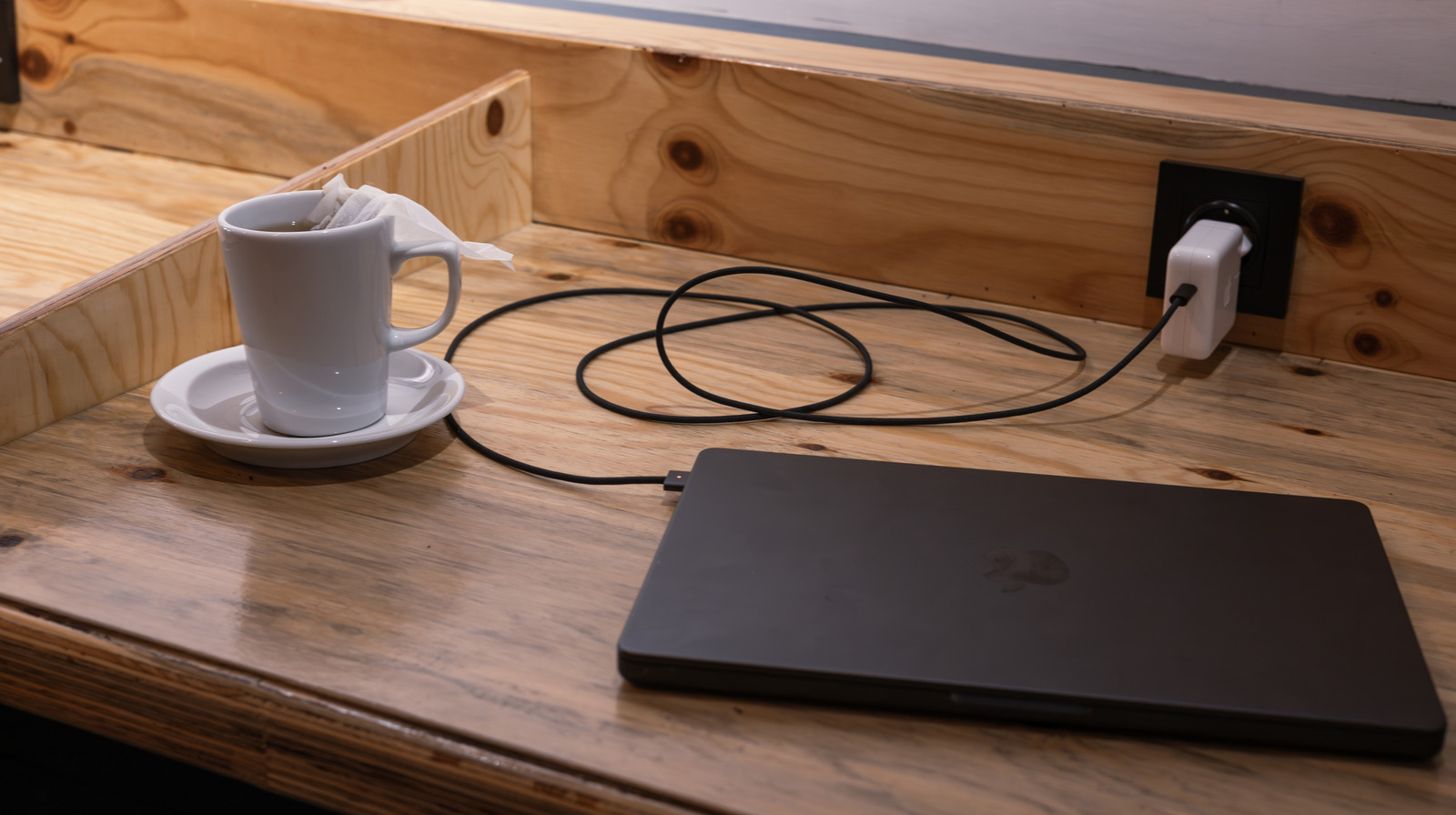Verdict
If you value performance and speed above all else, the Poco F7 is the phone for you. Despite its affordable price tag, it offers great performance, multi-day battery life and a more eye-catching design than other models in the F7 family. The cameras could be better, and HyperOS takes some getting used to, but it’s all the phone that most people need.
-
Incredibly competitive price for the spec -
Multi-day battery life -
Big, bright screen
-
Cameras remain a weak point for Poco -
HyperOS is packed full of bloatware
Key Features
-
Review Price: £389 -
Snapdragon 8s Gen 4 performance
With Qualcomm’s new premium Snapdragon chipset on board, the F7 offers similar performance to top-end flagships of last year. -
Massive battery
With a 6500mAh battery on-board, the Poco F7 can easily get through two days of use. -
6.8-inch AMOLED screen
Despite its affordable price, the F7 packs a top-end 6.8-inch AMOLED screen with a 120Hz refresh rate, great for both movies and games.
Introduction
If you’re someone whose biggest priority in a smartphone is speed and outright performance, but at the cheapest price possible, few brands deliver like Poco.
It has made its name offering phones with near flagship-levels of power, but at half the price. I don’t think any phone epitomises that more than the latest model, the Poco F7.
Design
- More gamer-like look than other F7 models
- Full IP68 dust and water resistance
- Weighty, at over 200g
Glanced at from the side, or the front, you’d be forgiven for confusing the Poco F7 with virtually every other phone available in 2025. It’s got those Pixel and iPhone-like edges. They’re completely flat, with very subtle chamfering on the top and bottom to ensure the angle between the back, front and sides isn’t sharp.


Dull as it might be to have yet another phone of this design, it does feel reassuringly strong and sturdy. There’s little in the way of flex here, and – combined with the super skinny bezels around the display’s edges – delivers a premium aesthetic that belies its modest price.
It also happens to be IP68 rated against water and dust ingress, so it’s as well protected against small particles and moisture as any phone twice its price.
Turn it around to the back and things get a little more interesting. At least, they do if you get the limited edition Cyber Silver variant. This version features a dual-tone finish, where the bottom silver portion is super clean and mirror-like. The top, angled third is embellished with geometric black and red accents, giving it something of a gamer-like aesthetic.


There are plainer finishes available too – for those who aren’t keen on the futuristic accents and patterns – but for those who are, I suspect it’ll seem like a breath of fresh air.
The only objective downside to this silver-polished finish, apart from being impossible to photograph without reflections getting in the way, is that it attracts fingerprints and smears like nothing else I’ve used this year (so far). Touch it once, and you’ll leave a greasy smear.
It is slightly bigger than the Poco F7 Pro – likely to make space for the bigger battery (which I’ll get to later) – so it’s not the most nimble or compact-feeling phone. It’s not particularly light either, crossing over that 200g barrier into the realm of being a little fatiguing.


Screen
- 6.83-inch AMOLED screen
- Non-LTPO 120Hz refresh rate
- Great for movies and gaming
At 6.83 inches diagonally, the Poco F7’s AMOLED display is the largest in the F7 family. Both the Pro and Ultra feature a 6.67-inch panel, by comparison.
While it doesn’t quite match the WQHD+ resolution of the other two, it’s pixel-dense enough. It’s a 1280p panel, comfortably reaching more than 400 pixels per inch, to ensure that anything on screen appears crisp and clean.


Add that to the host of other impressive specs, and it’s hard to see any obvious weaknesses. It can reach 120Hz refresh rates, although it isn’t LTPO and so can’t adapt at very small increments or drop really low on static pages. However, it does mean that animations in the interface are extremely smooth, and it can keep up with the fast-paced animations in games.
At 3200 nits peak, and 1700 nits across the entire panel, it’s capable of delivering high levels of brightness in small localised spots during HDR and across the whole screen. In essence, there’s very little to complain about here, especially considering the F7’s affordable price tag.


Performance
- Snapdragon 8s Gen 4
- Impressive everyday performance, especially for the price
- Very similar performance to Poco F7 Pro
Measuring performance, whether based on the everyday experience of using the phone and running it through our usual benchmark tests, one thing becomes very clear: the Snapdragon 8s Gen 4 inside is virtually as strong as the Snapdragon 8 Gen 3 inside the Pro. Any performance gained by going with the older, previously top-tier chipset, is marginal.
In fact, likely down to the fact that it has fewer pixels on the screen to refresh, the performance was sometimes better on the Poco F7 than on the F7 Pro. Running it through a graphics stress test in 3D Mark, it delivered a higher reliability and consistency score than the Pro managed at 82%.
What that means is that even if you were to push the phone to run some of the most graphically demanding games and apps, it’ll cope with them just fine. It responds quickly to on-screen gestures, animates smoothly with little stutter or lag, never leaving me with a sense other than that I was using a proper flagship phone.


Sure, it’s not quite as powerful as the super high-end Snapdragon 8 Elite, but it’s more than good enough for pretty much anyone.
Cameras
- 50MP main and 8MP ultrawide on rear
- 20MP selfie camera
- Weakest area of the F7 experience
If there’s a weak spot on the Poco F7, it is – unsurprisingly – the camera. It’s the part of the phone that betrays its mid-range status more than most other elements.


Its system is made up of a 50-megapixel sensor in the primary lens, and an 8-megapixel ultrawide. And, while that pixel count is the same as the F7 Pro, the main sensor isn’t as big as the Pro’s version, particularly apparent in more difficult lighting conditions where the highlights and shadows are more contrasting, or in low light.
Keep it in less challenging situations – shooting in good daylight without lots of heavy backlighting or supremely bright highlights – and it can take a decent image. It can focus on objects pretty close to the lens, and with the 2x in-sensor cropped zoom delivering passable photos without any significant loss in detail, you don’t necessarily miss the fact that it hasn’t got a proper zoom lens.
Try and push any further than 2x zoom though, and image quality drops pretty dramatically. Even at 4x, which on more expensive phones is generally still decent enough, the Poco F7 photos start to look blurry, lacking sharpness and taking on that classic oil-painting-like look that often occurs when you zoom quite far into scenes using a phone camera.
It’s tough to criticise the Poco F7’s primary camera too much though, especially given the price point this otherwise excellent phone has been launched at. Still, I’ve often found with the primary camera that it struggles to balance the highlights and shadows, and often produces colours that are quite artificial-looking.
Sometimes shadows appear blue in landscapes. They often end up looking quite dark, crushed and oversharpened too. All classic traits of the processing behind the scenes attempting to take images from a cheaper camera system, and process them to make them appear more attractive when viewed on a phone screen. Viewed on a bigger screen, they appear a little rough around the edges, particularly when using the ultrawide lens.
That secondary, wider camera is darker, and really struggles when in low-light situations. It’d be harsh to say it was a useless lens, because in a pinch – in bright daylight – when you need a wider field of view, it’ll do. But it’s quite obviously poorer than the main camera. Images are generally quite dark and contrasty.
At night, using the night mode, it’s only really worth using the primary sensor. Because the ultrawide struggles so much with drawing in as much light as the main sensor, its nighttime photos were generally just very dark.
Even when there were bright light sources illuminating parts of the scene, it would struggle to take advantage at times. One could argue that it looks more like nighttime when it’s darker, but if we’re judging the amount of light elevated from the scene, it pales in comparison to the main camera.
All of this does feel a little like nitpicking, however, especially when reminded that the phone is under £400. To get the costs down, given how strong the rest of the phone is, the camera was always going to suffer a little.
For most people, I’d say that if you stick to using the main camera at 1x or 2x zoom, you’ll most of the time get a photo you’re happy with. It might struggle to focus when it’s nighttime – especially at 2x zoom – but for the most part, it can shoot a sharp image with decent detail. A little over-processed and over-saturated, yes, but decent nonetheless.
With the Pro model there’s a sense that its main sensor is better at drawing in the subtle differences in colour, like it captures a wider spectrum and shows the nuances more faithfully, so if the camera is more important to you, there’s no harm in paying the extra to get the Poco F7 Pro instead.
Software
- HyperOS 2 based on Android 15
- Packed full of bloatware, but can be managed
- Ads baked into Xiaomi apps
Software with Poco is something of a mixed bag. It’s Xiaomi’s HyperOS system, based on Android 15, and, as always, comes with lots of preloaded bloat and some frustrating choices.


If you’re used to other Android skins, you’ll have to relearn where some of the options might be in the submenus in the Settings app. Rearranging the Home Screen apps and widgets can take time upon set-up, as can removing all the pre-loaded folders and apps that Xiaomi thinks should be on the Home Screen, but really shouldn’t.
There are folders of suggested apps, acting effectively as an ad for Xiaomi’s own Play Store alternative for apps and games. Changing wallpapers, ringtones and any other personalisation can lead to launching a theme store and being bombarded with thousands of options if you go through the main settings app. That’s not to mention the persistent ads that often appear in many of Xiaomi’s own apps.


It can be tamed with a little time and effort upon first setup, but it adds friction to the experience that’s hard to overlook if you’re used to a cleaner, less bloaty version of Android.
Battery life
- Massive 6500mAh battery
- Multi-day use is more than possible
- Full charge in 40 minutes
The F7’s Snapdragon 8s Gen 4 isn’t just powerful; it also happens to be very efficient in terms of battery use. Again, likely because it doesn’t have a QHD+ resolution display and a very large 6500mAh battery capacity, but getting through a full day isn’t a problem at all.
In fact, for a lot of people, I suspect it’s a two-day battery. For my own particular, quite casual, light usage, making it from the beginning of one day to the end of a second was pretty easy. My mixed use rarely tops three hours of screen time in a day, and typically that’s a mixed bag of reading sports news, Instagram, social media, a little photography and playing Mario Kart Tour.


Even on a day that was heavier than my typical usage, it still had more than half the battery left over at 11pm, having started the morning at 8am with around 95% battery.
On that day, I watched an hour of Netflix, timed 30 minutes of Mario Kart Tour, listened to music for an hour, went out to test the camera – shooting 40-50 photos – plus my usual casual messaging on WhatsApp and Slack. The next day, testing some headphones for battery performance, I listened to 4-5 hours of music, and still had a little battery left over at the end of the second day.
Refilling it again doesn’t take as long as you might think for a battery this size either. Its 90W charger can do an 80% charge in 30 minutes according to Xiaomi, and with the phone hitting a full 100% in just 40 minutes, the company’s claims certainly ring true.
Should you buy it?
You want a great-performing phone without the price tag
For a solidly mid-range phone, the F7 stands out with its top-end performance and impressive battery longevity.
For all the Poco F7’s strengths, camera performance isn’t one of them. The main camera is fine in daylight, but there are more capable options at a similar price.
Final Thoughts
Ultimately, I’d argue that, given the price difference, especially with early bird pricing of £319, the Poco F7 presents a more compelling purchasing option than the F7 Pro. It’s cheaper, virtually matches the Pro for performance and speed, and has a bigger, longer-lasting battery.
If you don’t care too much about camera quality, it’ll give you a great all-round experience. And it’ll cost you less.
Considering what the big-name manufacturers charge for their mid-range phones – phones like the Google Pixel 9a, Samsung Galaxy A56 and iPhone 16E – they don’t seem quite as good value for money for anything other than maybe the cameras and software.
How We Test
We test every mobile phone we review thoroughly. We use industry-standard tests to compare features accurately, and we use the phone as our primary device throughout the review period. We’ll always tell you what we find, and we never, ever, accept money to review a product.
- Used as a main phone for over a week
- Thorough camera testing in a variety of conditions
- Tested and benchmarked using respected industry tests and real-world data
FAQs
No, but you can get a 67W HyperCharge charger for free with the purchase from Xiaomi at the time of writing.
Yes, it offers flagship-level IP68 dust and water resistance.
Xiaomi has committed to four OS upgrades and six years of security patches.
Test Data
| Poco F7 | |
|---|---|
| Geekbench 6 single core | 2094 |
| Geekbench 6 multi core | 6294 |
| 1 hour video playback (Netflix, HDR) | 5 % |
| 30 minute gaming (light) | 5 % |
| Time from 0-100% charge | 40 min |
| Time from 0-50% charge | 17 Min |
| 30-min recharge (included charger) | 82 % |
| 15-min recharge (included charger) | 46 % |
| 3D Mark – Wild Life | 4341 |
| GFXBench – Aztec Ruins | 61 fps |
| GFXBench – Car Chase | 66 fps |
Full Specs
| Poco F7 Review | |
|---|---|
| UK RRP | £389 |
| USA RRP | Unavailable |
| Manufacturer | – |
| Screen Size | 6.8 inches |
| Storage Capacity | 256GB |
| Rear Camera | 50MP + 8MP |
| Front Camera | 20MP |
| Video Recording | Yes |
| IP rating | IP68 |
| Battery | 6500 mAh |
| Fast Charging | Yes |
| Size (Dimensions) | 77.9 x 8.2 x 163.1 MM |
| Weight | 216 G |
| Operating System | HyperOS 2 (Android 15) |
| Release Date | 2025 |
| First Reviewed Date | 27/06/2025 |
| Resolution | 1280 x 2772 |
| HDR | Yes |
| Refresh Rate | 120 Hz |
| Ports | USB-C |
| Chipset | Qualcomm Snapdragon 8s Gen 4 |
| RAM | 12GB |
| Colours | Black, White, Cyber Silver |
| Stated Power | 90 W |












